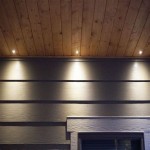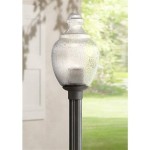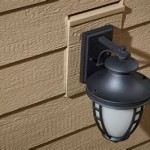Outdoor Lighting Tips for Portraits
Outdoor portrait photography offers a unique and beautiful way to capture the essence of your subject. Natural light is often considered the most flattering, creating soft shadows and dynamic highlights. However, the unpredictable nature of outdoor lighting can pose challenges for photographers. Mastering outdoor lighting techniques will ensure your images are well-balanced and emphasize the subject's beauty. This article will delve into essential tips and strategies for achieving stunning outdoor portraits.
Golden Hour Photography
The golden hour, the period shortly after sunrise and before sunset, is renowned for its warm, soft, and directional light. During these times, the sun is lower in the sky, casting long shadows and creating a captivating ambiance. The longer shadows provide depth and dimension to the portrait, highlighting the subject's features. The warm tones of golden hour light also add a touch of romanticism and nostalgia to the image.
To maximize the golden hour, scout locations beforehand and consider the direction of the sun. Position yourself so the sun is at your back, illuminating the subject from the front. This will create a soft, even lighting effect. If the sun is too harsh, use reflectors to bounce light back onto the subject, filling in shadows and creating a balanced exposure.
Understanding Diffused Light
Diffused light refers to indirect sunlight that has been scattered by clouds, trees, or other objects. This type of light is softer and more even than direct sunlight, making it ideal for portraits. Diffused light reduces harsh shadows and creates a more flattering and forgiving illumination.
To find diffused light, look for areas shaded by trees or large buildings. Alternatively, you can utilize a diffuser to create your own soft, diffused light. A diffuser is a translucent material, such as a white sheet or a specialized photography diffuser, that softens the light. Position the diffuser between the sun and your subject to create a more flattering and evenly lit photograph.
Utilizing Natural Reflectors
Natural reflectors are readily available in the outdoor environment. They can help to bounce light back onto the subject, filling in shadows and brightening the overall scene. White walls, sidewalks, sand, and water surfaces act as natural reflectors. These reflectors create a more balanced lighting effect, reducing contrast and enhancing the subject's features.
For example, position your subject near a white wall or a reflective surface, using the reflected light to brighten their face. Experiment with different angles and distances to determine the most flattering position. The goal is to use natural reflectors to create a more balanced and pleasing lighting effect.
Using Fill Flash
Fill flash is a technique that utilizes a flash to supplement the existing natural light. It helps to fill in shadows and create a more balanced exposure. Fill flash is particularly useful on bright, sunny days when the shadows on the subject's face can be too deep.
When using fill flash, the key is to set the flash to a low power setting. This will ensure that the flash only provides a subtle fill light, without overpowering the natural light. To avoid harsh shadows, use a diffuser or a reflector to soften the light from the flash.
Controlling Exposure
Proper exposure is crucial for achieving high-quality portraits. The goal is to capture a balanced exposure that showcases the subject's features without blowing out highlights or losing detail in the shadows.
Use your camera's metering mode to assess the light level. For outdoor portraits, spot metering often provides the most accurate exposure readings. Expose for the subject's face, adjusting the exposure settings until the highlights and shadows are balanced. Experiment with different aperture settings to control the depth of field and blur the background, creating separation between the subject and the environment.
Finding the Right Background
The background plays a significant role in outdoor portraits, creating context and influencing the overall mood of the image. Choose a background that complements the subject and enhances the story you wish to tell. A simple, uncluttered background draws attention to the subject. A busy background can distract from the focus.
Consider using a shallow depth of field to blur the background, isolating the subject and enhancing their presence. Experiment with different angles and perspectives to find a background that harmonizes with the subject and creates a cohesive visual narrative.
Utilizing Natural Props
Props can add visual interest and enhance the narrative of your portraits. Natural props, found in the outdoor environment, blend seamlessly with the surroundings, adding a touch of authenticity. Trees, flowers, rocks, and other natural elements can create a sense of place and enhance the connection between the subject and the environment.
Incorporate natural props strategically, ensuring they complement the subject and the overall aesthetic of the photograph. Use props to create a sense of scale, add depth, and enhance the visual storytelling of your portraits.

11 Outdoor Portrait Photography Tips For Easy Shots

11 Outdoor Portrait Photography Tips For Easy Shots

The Best Lighting For Outdoor Photography Focus

Applying The 3 Light Studio Setup To Outdoor Portraits

How To Mix Ambient Light And Fill Flash For Outdoor Portraits

Help The Sun Using Artificial Light In Outdoor Photography Learn By Zoner Photo Studio

Applying The 3 Light Studio Setup To Outdoor Portraits

How To Mix Ambient Light And Fill Flash For Outdoor Portraits

Lighting Gear For Outdoor Portraits B H Explora

Using Lights For Outdoor Night Time Portrait Photography







